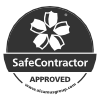How Can We Help?
Together we aim to maximise the strengths of both companies to offer even better service to our customers.
Get In Touch
For any questions or advice regarding water treatment or Legionella management services please contact our friendly team of experts.










